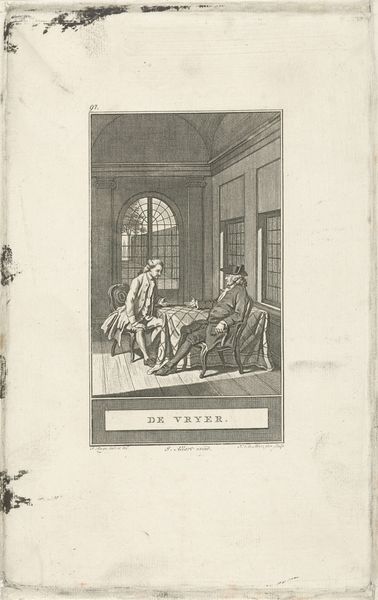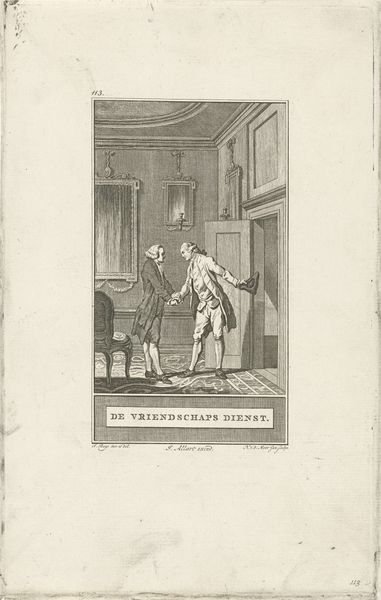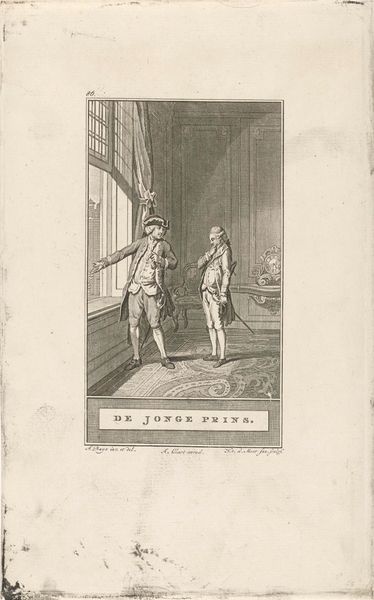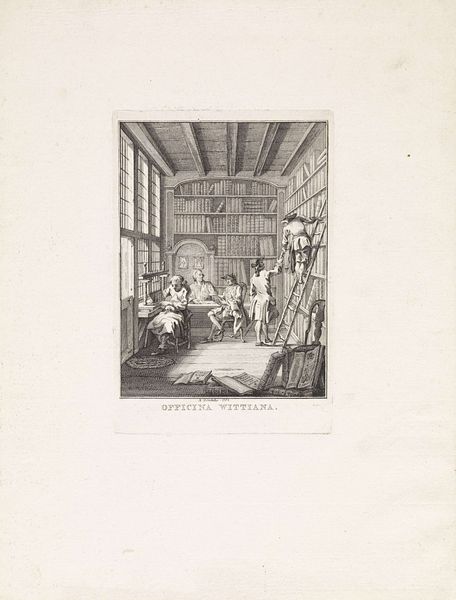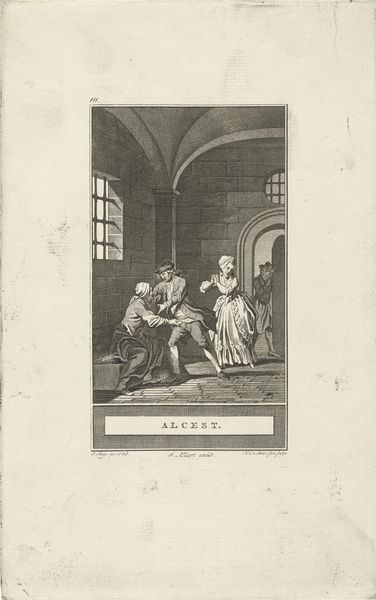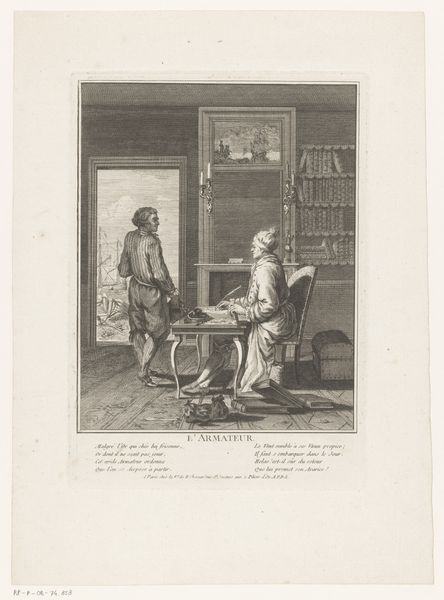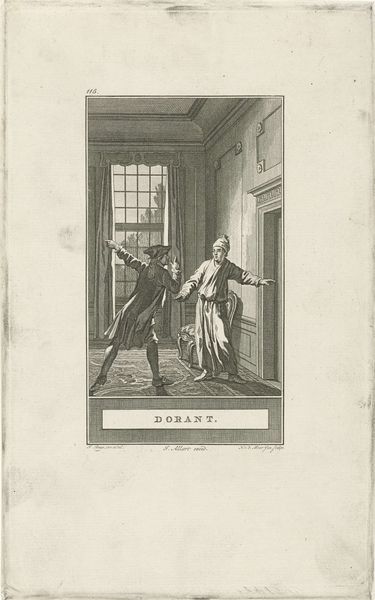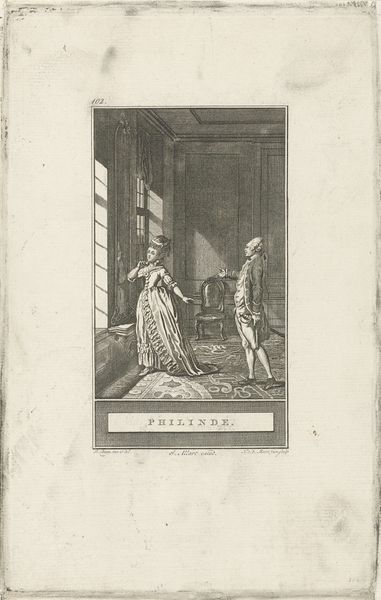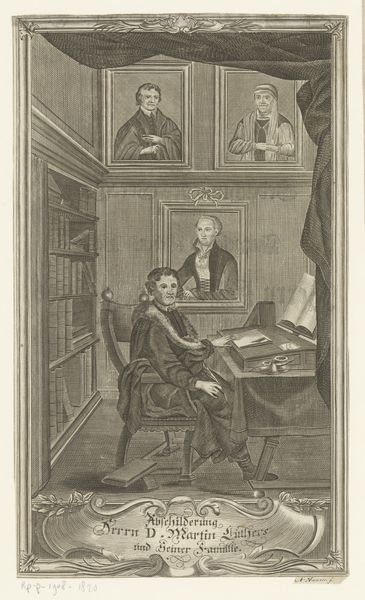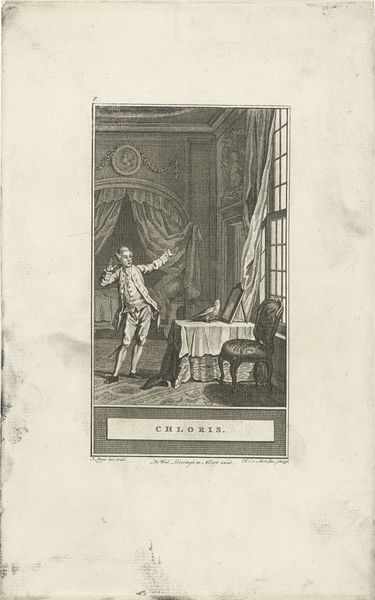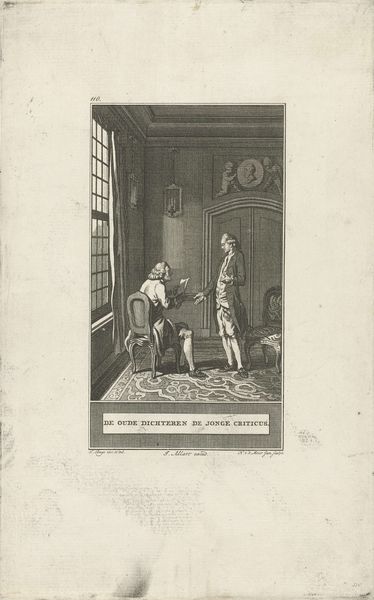
drawing, print, pen, engraving
#
portrait
#
drawing
#
neoclacissism
# print
#
old engraving style
#
pen-ink sketch
#
pen
#
genre-painting
#
history-painting
#
engraving
Dimensions: height 244 mm, width 153 mm
Copyright: Rijks Museum: Open Domain
Curator: This engaging engraving, dating from 1778 to 1785, is entitled "Gesprek van de jonge geleerde met een oude man," which translates to "Conversation between a young scholar and an old man." The artist is Noach van der (II) Meer, and you can find this print on display here at the Rijksmuseum. Editor: I am struck by the intimacy and stillness despite its subject matter being a debate or conversation. The soft lines lend a calm to what would seemingly be a heated moment of exchange. There's an almost uncanny silence radiating from it. Curator: Absolutely. This work comes from the era of Neoclassicism, a period when art sought to emulate the perceived order and reason of the classical world. In doing so, art frequently sought to reflect on how we can better understand political events as history unfolds. Here we see the relationship of teaching in civic society. Editor: Yes, I appreciate that idea of teaching because I see more than just reason in this older man pointing up at a book on the shelf. His outstretched hand conveys knowledge—yes—but his slight stoop feels representative of a system, one rooted in years of study and patriarchal teachings, and that potentially presents challenges for a younger student, or even ourselves. Curator: Interesting to bring the patriarchal dynamic to the front, because at its core, Neoclassical art often served as a didactic tool, presenting idealized visions of societal structure and governance. This piece uses the space of the older man's private library to discuss those ideas on knowledge. And as such it becomes less an intimate conversation, but more of a lesson on citizenship. Editor: Precisely, it almost presents a framework that invites conversation to occur. We’ve got symbols of learning everywhere. The bust. The books, The world map… So while on the one hand, there is that quiet sense of learning from generations, I read it as both an educational snapshot and maybe, even, an intentional power play that uses social standards of that time as the key. Curator: Considering that perspective and this era, I would argue that power play is quite understated in this genre painting. What strikes me most, and in terms of social impact, is how the print itself, as a relatively accessible medium, brought these refined conversations to a broader audience beyond the aristocratic sphere. It democratized discourse. Editor: I like how that tension—a personal moment between only two people, captured in print form— invites us, even now, to see where and how those debates around the power of knowledge still occur today. Curator: It's a compelling piece, reminding us that the spaces of intellectual exchange, while seemingly quiet, hold immense power. Editor: Agreed. And reflecting on our roles as inheritors and interpreters of that history is always necessary.
Comments
No comments
Be the first to comment and join the conversation on the ultimate creative platform.
